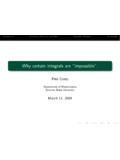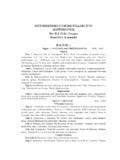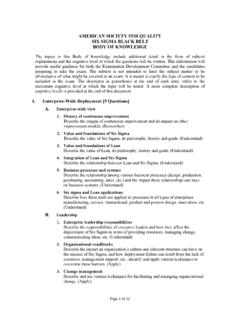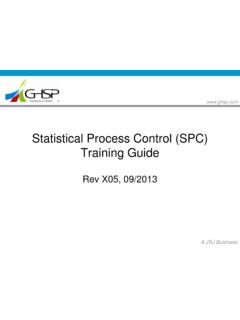Transcription of The Assumption(s) of Normality - The University of Iowa
1 the assumption (s) of Normality Copyright 2000, 2011, 2016, J. Toby Mordkoff This is very complicated, so I ll provide two versions. At a minimum, you should know the short one. It would be great if you knew them both. Short version: in order to do something as magical as provide a specific probability for observing a particular mean or a particular difference between two means, our statistical procedures must make some assumptions . One of these assumptions is that the sampling distribution of the mean is normal.
2 That is, if you took a sample, calculated its mean, and wrote this down; then took another (independent) sample (from the same population) and got its mean and wrote it down; and did this an infinite number of times; then the distribution of the values that you wrote down would always be a perfect bell curve. While maybe surprising, this assumption turns out to be relatively uncontroversial, at least when each of the samples is large, such as N 30. But in order to use the same statistical procedures for all sample sizes and in order for the underlying procedures to be as straight- forward as they are, we must expand this assumption to saying that all populations from which we take samples are normal.
3 In other words, we have to assume that the data inside each of the samples are normal, not just that the means of the samples are normal. This is a very strong assumption and it probably isn t always true, but we have to assume this to use our procedures. Luckily, there are simple ways to protect ourselves from the problems that would arise if these assumptions are not true. Now, the long Nearly all of the inferential statistics that psychologists use ( , t-tests, ANOVA, simple regression, and MRC) rely upon something that is called the assumption of Normality .
4 In other words, these statistical procedures are based on the assumption that the value of interest (which is calculated from the sample) will exhibit a bell-curve distribution function if oodles of random samples are taken and the distribution of the calculated value (across samples) is plotted. This is why these statistical procedures are called parametric. By definition, parametric stats are those that make assumptions about the shape of the sampling distribution of the value of interest ( , they make assumptions about the skew and kurtosis parameters, among other things; hence the name).
5 The shape that is assumed by all of the parametric stats that we will discuss is normal ( , skew and kurtosis are both zero). The only statistic of interest that we will discuss here is the mean. What is assumed to be normal? When you take the parametric approach to inferential statistics, the values that are assumed to be normally distributed are the means across samples. To be clear: the assumption of Normality (note the upper case) that underlies parametric stats does not assert that the observations within a given sample are normally distributed, nor does it assert that the values within the population (from which the sample was taken) are normal.
6 (At least, not yet.) The core element of the assumption of Normality asserts that the distribution of sample means (across independent samples) is normal. In technical terms, the assumption of Normality claims that the sampling distribution of the mean is normal or that the distribution of means across samples is normal. Example: Imagine (again) that you are interested in the average level of anxiety suffered by graduate students. Therefore, you take a group of grads ( , a random sample) and measure their levels of anxiety.
7 Then you calculate the mean level of anxiety across all of the subjects. This final value is the sample mean. the assumption of Normality says that if you repeat the above sequence many many many times and plot the sample means, the distribution would be normal. Note that I never said anything about the distribution of anxiety levels within given samples, nor did I say anything about the distribution of anxiety levels in the population that was sampled. I only said that the distribution of sample means would be normal.
8 And again, there are two ways to express this: the distribution of sample means is normal and/or the sampling distribution of the mean is normal. Both are correct as they imply the same thing. Why do we make this assumption? As mentioned in the previous chapter, in order to know how wrong a best guess might be and/or to set up a confidence interval for some target value, we must estimate the sampling distribution of the characteristic of interest. In the analyses that we perform, the characteristic of interest is almost always the mean.
9 Therefore, we must estimate the sampling distribution of the mean. The sample, itself, does not provide enough information for us to do this. It gives us a start, but we still have to fill in certain blanks in order to derive the center, spread, and shape of the sampling distribution of the mean. In parametric statistics, we fill in the blanks concerning shape by assuming that the sampling distribution of the mean is normal. Why do we assume that the sampling distribution of the mean is normal, as opposed to some other shape?
10 The short and flippant answer to this question is that we had to assume something, and Normality seemed as good as any other. This works in undergrad courses; it won t work here. The long and formal answer to this question relies on Central limit theorem which says that: given random and independent samples of N observations each, the distribution of sample means approaches Normality as the size of N increases, regardless of the shape of the population distribution. Note that the last part of this statement removes any conditions on the shape of population distribution from which the samples are taken.







